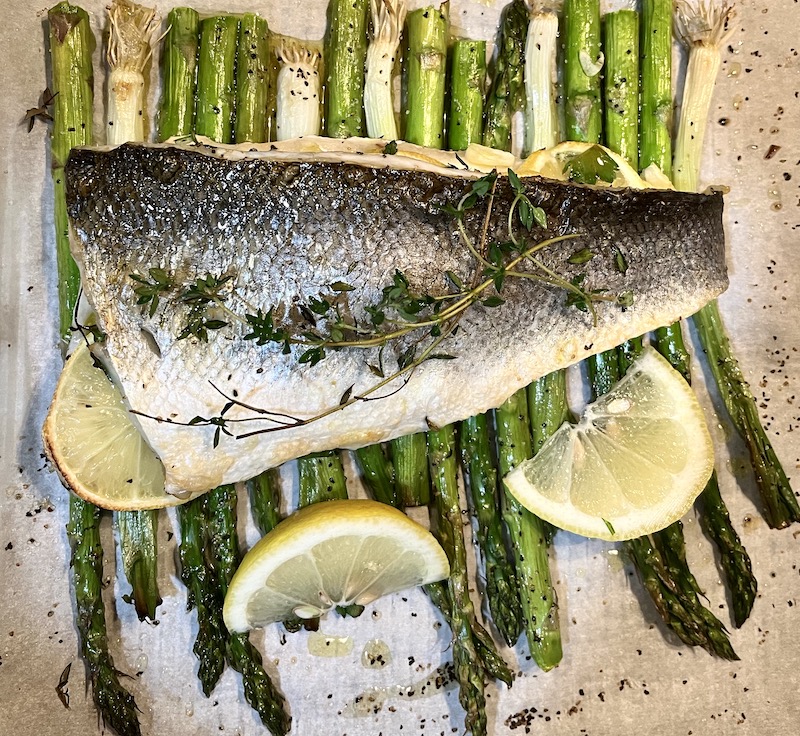Boot Camp Tip of the Week by Get You In Shape Trainer Julie McCan
What’s ‘Shakin’ with Salt these Days?
I recently came across an interesting article about salt. Interesting because I personally thought that the debate about salt was a forgone conclusion — that everyone knows salt should be used sparingly in our diets. Buying packaged or can goods that state “low or no added sodium” must be more common place then ever given how many items like this exist on grocery shelves.
But, as a trainer, I understand that your body needs sodium to help maintain the right amount of hydration. So, I read this article thinking maybe there is a new understanding of sodium’s positive affects on the body versus its negative aspects. What I found was a well written, simple to understand explanation of how sodium is used in your body and how sodium effects or is effected by:
- Exercise
- High blood pressure
- Sports drinks
- What foods are the biggest culprits of high sodium
You will find information and answers to all of these things and more an article recently published in IDEA Fitness Journal, March 2011
To Salt Or Not To Salt?
by Martica Heaner, MA, MEd Nutrition: An update on sodium and how it affects health and exercise.
Salt’s reputation for being the spice of life may be coming to an end. These days, salt is a four-letter word, and anyone wielding a shaker at the dinner table is likely to be met with condescending looks or comments from people convinced that salting is as toxic as smoking. Widespread media coverage on the dangers of salt, and recent public-health efforts to reduce it in foods, seem to confirm this consensus.
But can a substance that for centuries has been liberally used (and praised) as a spice and preservative really be that bad? And do the health concerns apply to committed exercisers? After all, it wasn’t too long ago that athletes were encouraged to increase their sodium intake—by swallowing salt tablets—to counteract the losses from sweating. Some of the confusion and misconceptions about salt are clarified here.
Salt
Salt, or sodium, is one of the electrolytes, a group of (mostly) minerals. Other electrolytes include potassium, calcium, chloride and magnesium. Table salt is technically sodium chloride, a combination of electrolytes.
Electrolytes
Electrolytes play a variety of important roles in the body. Most people are aware that calcium is crucial for bone formation, but it also aids in muscle contraction, blood clotting and the transmission of nerve impulses. Magnesium helps the body use glucose, assists in making protein and fat, and acts as a catalyst in energy production from ATP metabolism. Sodium is involved in nerve signal transmission and muscle contraction. But one of sodium’s most important functions is to help maintain optimum fluid levels in body tissues, specifically the balance between the fluids inside and outside of every single cell in the body (Whitney & Rolfes 2002).
Around two-thirds of the body’s fluid is intercellular (within cell walls), and around one-third is extracellular (outside the cells). Thinking back to biology 101, you may remember that cells contain a variety of organelles, including mitochondria (which produce energy) and lysosomes (which mop up cellular waste and pathogens). The many actions of these and other structures within a cell occur within the liquid cytoplasm (Martini 2001).
Since cell walls are permeable, water can pass in and out of cells. If too much water enters a cell, it can burst. If too much water exits a cell, it can shrink, impairing its ability to function (Whitney & Rolfes 2001). Sweating tends to induce greater losses in extracellular fluids (Shirreffs & Maughan 2000). But when water levels outside of a cell are depleted, the water from inside the cell naturally flows up to try to maintain homeostasis. If there is not enough water present overall, this may leave too little fluid inside cells for proper functioning.
Sodium and other electrolytes (and the kidneys) all help regulate fluid levels. That’s why these minerals are classified as nutrients that the body needs. Sodium tends to promote water absorption; there is more sodium in the extracellular fluid and more potassium inside cells. Overly low sodium levels can be just as risky as levels that are too high, and imbalanced electrolyte levels can derail the body’s optimum fluid balance. The reason that public-health officials are in a brouhaha over salt is that sodium has been linked to hypertension (high blood pressure), which is a major risk factor for cardiovascular disease.
Exercise And Sodium Levels
“Sweat contains electrolytes, and the main electrolyte lost in sweat is sodium,” explains Kris Clark, PhD, RD, FACSM, director of sports nutrition at The Pennsylvania State University in State College, Pennsylvania. How much individuals sweat and how much sodium they lose through sweating vary widely from person to person.
During prolonged or vigorous workouts, especially in humid or hot conditions, sweating increases and electrolytes are lost. This can make it harder to maintain fluid balance and can lead to dehydration (ACSM 2007). That’s why athletes who sweat excessively are advised to replace electrolyte and fluid losses. “Generally, the higher the sweat loss, the more important sodium replacement is—and this applies to all people, regardless of [whether or not they have] hypertension,” advises Clark.
Traditionally, sodium tablets were used to replace sodium losses from excessive sweating. But research has shown that combining certain ratios of several electrolytes along with glucose and water provides a more favorable mix for rehydrating and replenishing nutrients. The small amount of sodium in a sports drink helps the body absorb the glucose—thus replacing some of the carbohydrates that have been used up—and also aids in retaining the water (Shirreffs & Maughan 2000). So using sports drinks is encouraged during or after sweat-heavy workouts, along with obtaining necessary nutrients and fluids through regular meals (ACSM 2007).
Sodium Intake And Sports Drinks
One 16-ounce bottle of Gatorade® contains around 220 milligrams (mg) of sodium (along with other electrolytes and glucose) (Gatorade 2010). But since a person can lose significant amounts of sodium after a long, sweaty workout, the extra sodium in a sports drink is more likely to maintain the body’s electrolyte balance rather than increase overall sodium levels. During long endurance events, such as marathons, sports drinks are a better choice than plain water. Drinking too much water can dilute blood levels of sodium and result in life-threatening hyponatremia, a condition in which blood sodium levels drop precipitously, leading to vomiting, confusion, headache, swollen hands and feet, or even death (ACSM 2007).
On the other hand, consuming sports drinks instead of water for everyday use, rather than after sweaty activity, will hike up sodium levels in the same way as eating other processed foods and drinks that add excess salt to the diet.
Sodium Benefits And Drawbacks
Salt is in the doghouse because of its links to high blood pressure. Some studies have found that people with hypertension, especially older adults and African Americans, tend to consume too much sodium (Nowson, Morgan & Gibbons 2003). By reducing dietary sodium, people with hypertension have been able to lower their blood pressure (Adrogué & Madias 2007).
However, not all studies have linked higher sodium intakes with blood pressure–related events such as strokes, heart attacks or heart failure (Alderman 2010). Many studies have not proved that salt is “bad,” because they have not shown cause and effect. In these observational studies, researchers compared factors between people with and without a disease, but subjects didn’t undergo an experiment to test whether a certain factor, such as excess sodium intake, actually caused an increase in strokes or directly led to increased death rates.
The link between salt and hypertension can be tricky to draw, as some people are more salt-sensitive than others, and if they reduce salt in their diet, their blood pressure will drop, while those who are not salt-sensitive may not see a drop. Moreover, salt is not the only culprit for high blood pressure: excess alcohol intake (having more than one drink per day for women and more than two per day for men), low levels of physical activity and low levels of fruit and vegetable consumption are also risk factors (see also “Hypertension and Sodium Intake”).
Still, the prevalence of hypertension is sky-high and rising—over 65 million Americans have it (Egan, Zhao & Axon 2010). Since a reduction in sodium intake has been shown to reduce blood pressure, and it may be easier to get people to eat less salt than to exercise more or to eat more fruits and veggies, a number of health organizations—the American Heart Association (AHA), the Institute of Medicine (IOM) and the Center for Science in the Public Interest—have advocated that sodium content in processed foods be reduced so that consumers are less exposed to it. The preliminary draft of the U.S. Department of Agriculture’s 2010 Dietary Guidelines for Americans lowered the recommended maximum intake of added sodium from 2,300 mg per day to 1,500 mg per day (USDA 2010), the amount previously recommended for people with, or at risk for, hypertension (AHA 2010). On average, adults who eat fast food ingest more than twice as much as that, around 3,400 mg per day (IOM 2010).
Hypertension And Sodium Intake
While the prevalent assumption is that everyone should consume less salt, that’s not necessarily the case. People with existing hypertension are generally advised to aim for low sodium, both by avoiding processed and restaurant foods and by salting less. But salt’s effect on blood pressure depends on the individual. “A person with normal kidneys excretes excess sodium and can handle very wide variations,” says Michael Alderman, MD, professor of epidemiology and population health and of medicine at the Albert Einstein College of Medicine in New York City. “However, restricting salt can control blood pressure in those people who are salt-sensitive.” Someone with hypertension or prehypertension who has been diagnosed as sodium-sensitive should first consult a physician regarding continued use of salt as an added ingredient in the daily diet, advises Clark.
As noted earlier, other lifestyle modifications—including reducing alcohol intake, eating more plant foods and getting more exercise—also affect hypertension. Consuming a more nutritious diet all around, rather than simply eating lower-sodium versions of the same old processed foods, may be the healthiest approach. Recent statistics from the Centers for Disease Control and Prevention (CDC) show that Americans do not eat enough fruits or vegetables: only one-third of U.S. adults get the recommended 2 cups of fruit per day, and only around a quarter get the minimum amount of 21/2–3 cups of vegetables (CDC 2010). Fruits and vegetables are high in potassium, an electrolyte that helps balance out sodium levels. Some studies have shown that vegetarian diets or diets that emphasize potassium-rich fruits and vegetables can lower high blood pressure even if dietary sodium is not limited (Nowson, Morgan & Gibbons 2003).
Whether people with normal blood pressure, especially if they are regular exercisers, should risk lowering their pressure by minimizing sodium intake is unclear. “Too little sodium can be a real hazard,” points out Alderman, who believes that universally lowering sodium in the food supply is a rash—and potentially risky—approach. Lowering sodium intake can lower blood pressure, perhaps in some cases to levels that are too low. Lowering intake has been shown to decrease insulin sensitivity as well (Alderman 2010), and insulin resistance is a precursor to diabetes, another serious health risk. Less salt can also lead to orthostatic hypotension, or dizziness.
How Much Is Too Much?
“Most added sodium comes from processed foods, so if you are eating out a lot or eating lots of packaged foods, you may want to be careful,” says Karen Dolins. EdD, RD, a board-certified specialist in sports dietetics and professor at Columbia University in New York City. But if you eat lots of fresh foods—especially fruits, vegetables, grains, nuts and legumes—and cook at home, you are likely already following a low-sodium diet. Only 12% of average sodium intake comes from sodium that occurs naturally in foods (Adrogué & Madias 2007), so you don’t need to worry about how much sodium is in a piece of bread or yogurt. “People who eat ‘clean’ (choosing fresh, whole foods and avoiding processed, packaged and preserved foods) and do long workouts or are heavy sweaters when they exercise should probably not restrict sodium,” says Dolins.
But if you eat most meals from a package, from a can or from drive-through or restaurants, you are probably getting more sodium than you realize (or need). Eighty percent of excess dietary sodium comes from processed and restaurant foods. A typical fast-food meal can give you nearly 1,400 mg of sodium—almost your daily quota—in one meal; for example, Big Mac with cheese (1,040 mg), medium fries (270 mg) and a medium (21-ounce) Diet Coke (30 mg) (McDonalds 2010).
If you never go near a fast-food restaurant, you’re not off the hook, however. Any packaged or processed product—even a seemingly healthful food such as an energy bar or fat-free salad dressing—can be high in sodium without tasting all that salty (Farley 2010). That’s because salt is commonly used as a preservative, and when it’s used during processing and cooking, it tends to get absorbed.
Salt can be a concern for some. But if you’re healthy and active and eat plenty of plant foods, you’re probably safe in saying yes to some salt.
Sidebar: Should You Avoid The Saltshaker?
Salting food may not be as bad as you fear. Using a saltshaker makes food taste saltier because the salt crystals are not absorbed into the food. When they are on the food’s surface, they come in direct contact with your taste buds.
- A salty taste doesn’t necessarily mean you are overdoing it.
- The new lower recommended intake for added sodium (not including what naturally occurs in foods) is no more than 1,500 mg/day (about two-thirds of a teaspoon).
- To fulfill your daily quota, it would take around 7 generous sprinkles of the shaker.
- Adding a little salt to fresh foods you cook isn’t a health hazard either—it takes about 17 pinches of salt to reach the limit.
- If you’re throwing in a pinch or two while cooking and shaking a time or two, you may very well be consuming a low-sodium diet.
- If you are a regular exerciser who eats lots of potassium-rich foods, you may even have more leeway. All plant foods contain potassium, but potatoes, bananas, avocados, pinto and kidney beans, acorn squash and artichokes are especially packed with potassium
(Source: IDEA Fitness Journal, March 2011)



